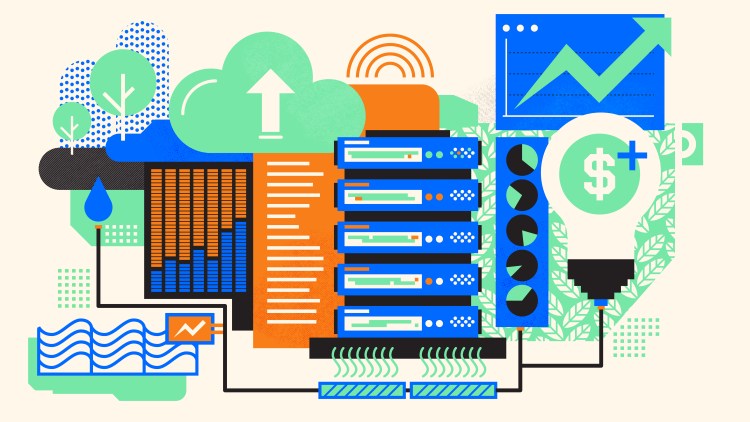Over the years, IT and data leaders have recognized the power-hungry and energy-intensive nature of data centers. However, with the surge in remote work, high-speed streaming, and the rise of generative AI models, the demand for data centers has skyrocketed. As a result, U.S. data center demand is projected to grow by 10% annually until 2030. In response to rising costs and stakeholder pressures, organizations are now committed to reining in data center consumption.
The Growing Focus on Data Center Sustainability
A recent study by Gartner Research reveals that an astounding 75% of organizations will implement a data center infrastructure sustainability program by 2027, compared to less than 5% in 2022. This shift in responsibility for sustainability from CIOs to infrastructure and operations leaders demonstrates the increasing focus on improving IT’s environmental performance, particularly concerning data centers. Autumn Stanish, senior principal analyst at Gartner, emphasizes the need to address sustainability, stating, “Responsibilities for sustainability are increasingly being passed down from CIOs to infrastructure and operations leaders to improve IT’s environmental performance, particularly around data centers.”
“As emerging technologies like generative AI contribute to doubling the volume of data expected in the next two years, businesses need to find the right balance between scalability, sustainability, and security.” – Bharti Patel, Senior Vice President of Product Engineering at Hitachi Vantara
Yet, addressing data center consumption is no easy task. A survey conducted by Hitachi Vantara in July 2023 found that two-thirds of IT leaders measure their data center’s energy consumption. However, one-third of respondents admitted that their data infrastructure uses excessive energy, and nearly half (46%) acknowledged that their sustainability policies do not address the impact of storing unused data.
“As emerging technologies like generative AI contribute to doubling the volume of data expected in the next two years, businesses need to find the right balance between scalability, sustainability, and security.” – Bharti Patel, Senior Vice President of Product Engineering at Hitachi Vantara
The environmental impacts of data centers, such as carbon emissions, resource depletion, and the need for cost efficiency, regulation compliance, corporate responsibility, and disaster resilience, make it imperative to rein in data center consumption.
Strategies to Reduce Data Center Consumption
Organizations can take several key steps to decrease their data center consumption in 2024:
- Migrating to shared cloud infrastructure: Bridgette McAdoo, chief sustainability officer at Genesys, highlights the benefits of operating multiple organizations in the same cloud environment. This approach significantly lowers emissions, especially when partnering with multi-tenant cloud providers that run on renewable energy.
- Adopting liquid cooling technologies: As data centers experience increased computing power, the heat generated requires efficient cooling systems. William Estes, general manager at Anderson Power, predicts that liquid cooling will play a crucial role in data center scalability. Liquid cooling systems can improve energy efficiency by up to 40% when compared to traditional convection methods.
- Investing in specialized hardware: Jonathan Friedmann, CEO and co-founder at Speedata, emphasizes the importance of purpose-built infrastructure in reducing energy consumption and improving efficiency. By aligning data center strategies with sustainability goals, organizations can optimize their operations and minimize indirect costs, including power, cooling, and footprint.
- Implementing holistic operations management platforms: Alpesh Saraiya, senior director of data center product management at Honeywell Building Technologies, recommends integrating situational awareness of operational technology (OT) data with IT asset data. This unified platform, coupled with powerful analytics, enables insights for optimizing uptime, maintenance, and reducing CO2 emissions and energy usage.
- Deploying serverless logging frameworks and standardizing on Sigma: Gary Hoberman, CEO and founder of Unqork, suggests reducing CPU cycles by implementing serverless logging frameworks. Additionally, standardizing on Sigma, the open-source rules language for logs, allows companies to write countermeasures that can be easily adapted to different signaling systems while saving CPU cycles.
By adopting these strategies, organizations can achieve a balance between scalability, sustainability, and security in their data center operations. It is crucial for businesses to prioritize sustainability and efficiency to address the environmental impacts and overall performance of data centers.










